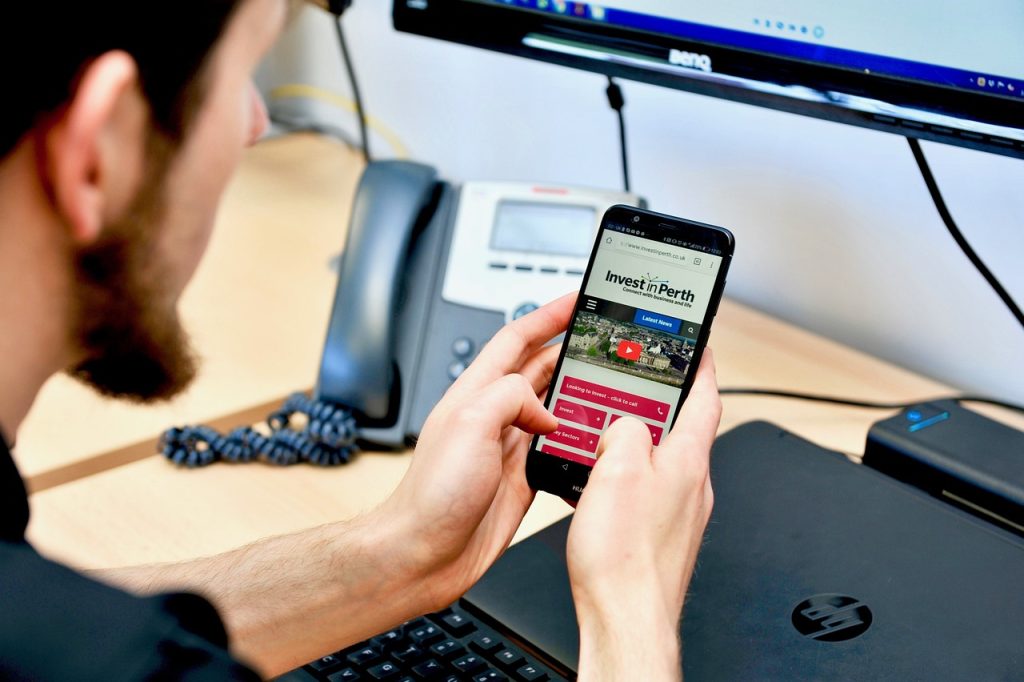
Imagine you’re browsing the web on your smartphone, searching for a restaurant to try out or looking for quick answers to a question. You click on a link, and the website that loads is slow, cluttered, and nearly impossible to navigate. Frustrating, right? You’d probably leave the site and search for a better one. This is a common experience for many users today, and it underscores the importance of a mobile-first approach to web design. But why exactly is it so crucial for your website to be mobile-first? And what does that mean for your business or personal brand?
The Shift to Mobile
The way people access the internet has dramatically shifted over the past decade. Gone are the days when desktop computers were the primary means of browsing the web. Today, more than half of global internet traffic comes from mobile devices. This trend is only expected to grow as smartphones become more affordable and accessible worldwide. As a result, a website that isn’t optimized for mobile use is likely to alienate a significant portion of its audience.

Mobile-first design isn’t just about making your website look good on smaller screens; it’s about ensuring a seamless user experience, regardless of the device. When you prioritize mobile users in your design process, you’re acknowledging the reality that most of your audience will interact with your site on a mobile device first. This shift in perspective is crucial in creating a website that meets the needs and expectations of modern users.
What Is Mobile-First Design?
Mobile-first design is exactly what it sounds like: designing your website with mobile users as the primary audience. This approach involves starting the design process with the smallest screen size in mind and then gradually expanding to larger screens like tablets and desktops. By doing so, you ensure that the core functionalities and content of your website are fully accessible and optimized for mobile users.
This design philosophy contrasts with the traditional approach, where websites were often designed for desktop screens first and then adapted for mobile devices. The problem with this older method is that it can lead to a poor user experience on mobile devices, as elements may not translate well to smaller screens. Buttons might be too small, text too cluttered, and images might not resize properly, all of which can frustrate users and drive them away.
Benefits of Mobile-First Design
1. Enhanced User Experience
A mobile-first design prioritizes the needs of the user, leading to a more intuitive and accessible experience. When users can easily navigate your site, find the information they need, and complete actions without frustration, they are more likely to stay longer, return, and even recommend your site to others. A positive user experience is directly linked to higher engagement and conversion rates.
2. Improved SEO Rankings
Google, the world’s leading search engine, has recognized the importance of mobile usability. In 2018, Google rolled out mobile-first indexing, which means the search engine primarily uses the mobile version of a website’s content for indexing and ranking. If your site isn’t mobile-friendly, it’s likely to be ranked lower in search results, making it harder for potential visitors to find you. By adopting a mobile-first approach, you’re more likely to rank higher on search engines, increasing your visibility and reach.
3. Faster Load Times
Mobile-first design often leads to faster load times, a crucial factor for user retention. Websites designed for mobile are typically more streamlined, with fewer heavy images and complex elements that can slow down load times. A faster website keeps users engaged and reduces bounce rates, which can also positively impact your SEO ranking.
4. Cost Efficiency
Starting with a mobile-first design can save you time and money in the long run. When you design for mobile first, you’re forced to focus on the most essential features and content, which simplifies the development process. Once the mobile version is complete, scaling up to larger screens is relatively straightforward. This approach minimizes the need for expensive redesigns and retrofitting that might be necessary if you start with a desktop-first approach.

How to Implement a Mobile-First Design Strategy
1. Prioritize Content
When designing for mobile, content is king. With limited screen space, it’s essential to prioritize what information is most important to your users. This often means simplifying your website’s design, removing unnecessary elements, and ensuring that the content that remains is clear, concise, and easy to interact with.
2. Focus on Touch-Friendly Design
Mobile devices rely on touchscreens, so your design needs to accommodate this. Buttons should be large enough to be easily tapped with a finger, and interactive elements should be spaced out to avoid accidental clicks. Ensuring that your website is touch-friendly improves usability and reduces frustration.
3. Optimize Images and Media
High-quality images and videos can enhance your website, but they can also slow it down if not optimized. Use responsive images that adjust to different screen sizes and compress files to reduce load times. Additionally, consider using adaptive media that only loads higher-resolution content on devices that can support it, further improving performance on mobile.
4. Test Across Devices
One of the most important steps in implementing a mobile-first design is testing. Your website should be tested across a variety of devices and screen sizes to ensure it functions well everywhere. Tools like responsive design testing tools or even real-device testing can help you identify and fix issues before your site goes live.
Common Pitfalls to Avoid
Even with the best intentions, there are common mistakes that can derail a mobile-first design strategy. One of the biggest is overloading the mobile version of your site with too much content or complex functionality. While it might be tempting to include everything your desktop site offers, this can lead to a cluttered and confusing experience on smaller screens.
Another common pitfall is neglecting the importance of mobile performance. Even if your site looks great on a mobile device, if it doesn’t load quickly or respond well to touch inputs, users are likely to become frustrated and leave.
The Future of Web Design Is Mobile-First
The rise of mobile internet usage is more than just a trend; it’s a fundamental shift in how people interact with digital content. As technology continues to evolve, the importance of a mobile-first approach will only grow. By prioritizing mobile users in your web design strategy, you’re not just meeting current expectations—you’re future-proofing your website against the inevitable changes in how people access the internet.
Adopting a mobile-first design isn’t just about staying relevant; it’s about providing the best possible experience for your users, no matter how they choose to visit your site.When first impressions count more than ever, ensuring that your website is mobile-first can be crucial for capturing and retaining your audience.
A mobile-first approach guarantees that users have a seamless experience on smartphones and tablets, where the majority of web traffic now originates. Additionally, paying attention to Web Design Colors can further enhance the visual appeal and user experience, making your site more engaging and effective.
